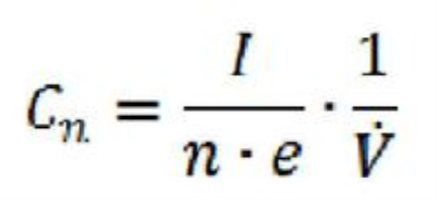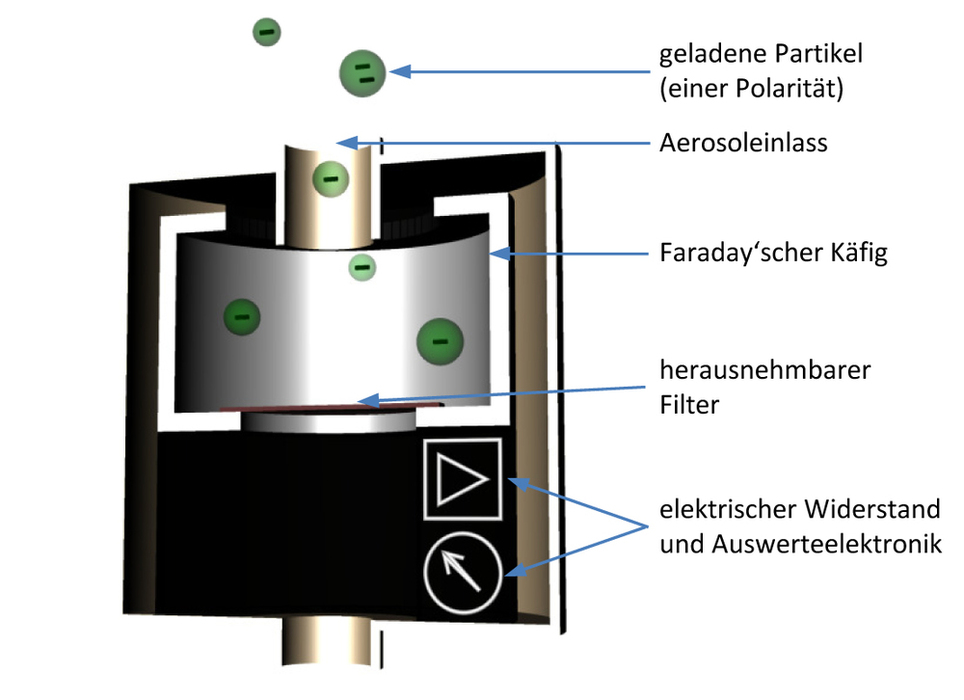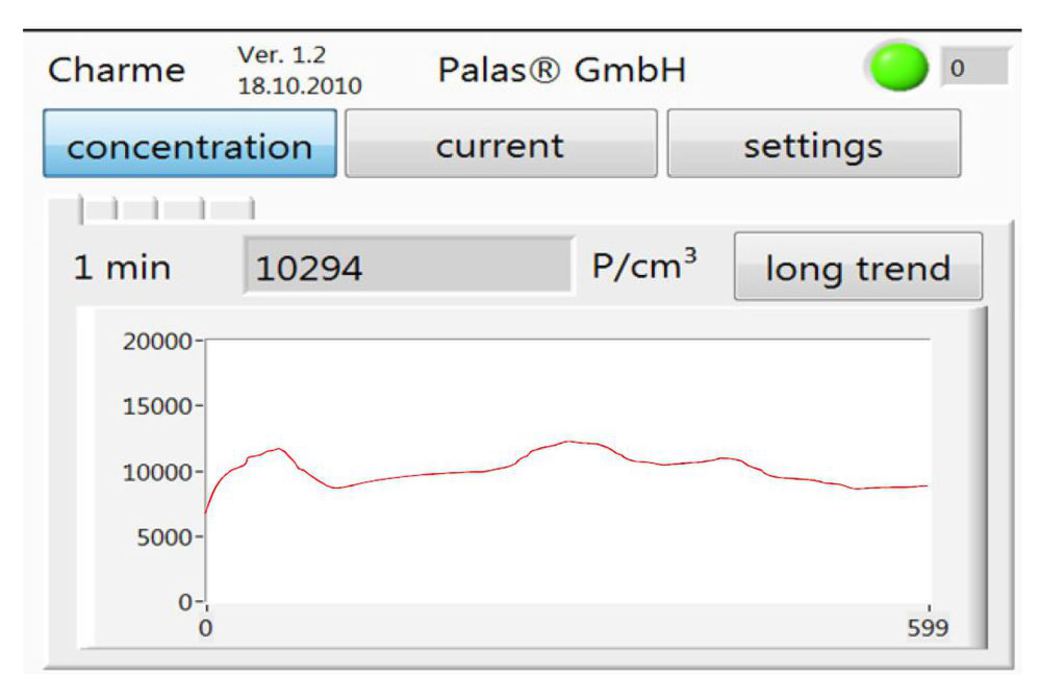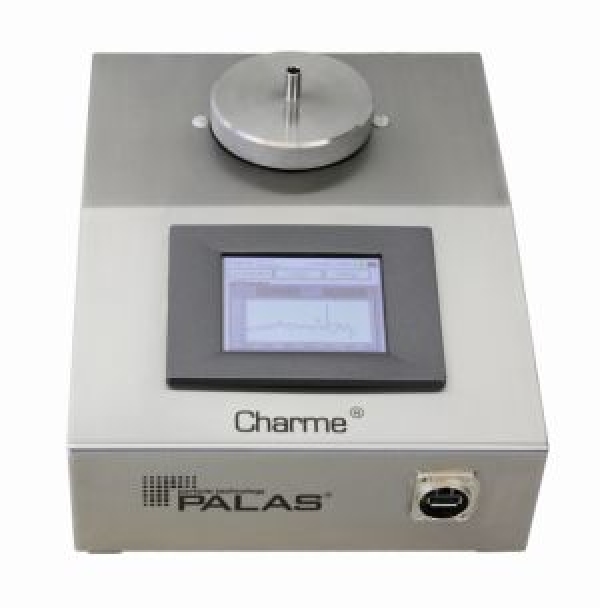Charme®
Determination of the electrical charge of ultrafine aerosols from 2 nm to 10 µm to determine the number concentrationThe Charme® charge aerosol measuring system developed by Palas® is an extremely powerful Faraday Cup aerosol spectrometer which measures the electrical charges present on aerosol particles.
Aerosol spectrometers have been used in research for years to measure the average charge of an aerosol. If the charge state of the particles in monodisperse aerosols is known, these instruments can be used to quickly and easily determine the number concentration of particles from about 2 nm in size.
With polydisperse aerosols, a supercharger or neutralizer is often used to generate a defined charge distribution. If a particle size is then set via an upstream classifier (e.g. Palas® DEMC), the number concentration of the particles can be indirectly determined via a current measurement (charge / time). Often an aerosol spectrometer is also used for the calibration of condensation particle counters (e.g. Palas® UF-CPC). An absolute particle number standard does not exist. However, a current measurement can be directly traced back to SI units. The condensation particle counter is calibrated by comparing a condensation particle counter with an aerosol spectrometer.
The reference aerosol spectrometer Charme® for concentration measurements in the size range from 2 nm to 100 μm* is characterized by a reliable function, the highest quality of the components used and simple operation via the touch screen. The extremely fast measurement (10 Hz) of particle concentration and electrometer current is displayed graphically in real time.
With the help of the user-replaceable gravimetric filter, an on-site correlation of the measured current (particle charges) to the mass concentration can be determined. The Palas® Charme® aerosol spectrometer is therefore particularly suitable for checking high particle loads in the environment and at the workplace as well as for calibrating condensation particle counters (CPCs).
The Charme® has achieved very good measured values when compared with established electrometers at the Federal Office of Metrology METAS in Switzerland.
* The upper limit for the particle size depends on the aerosol transport of large particles, i.e. essentially on the aerosol sampling and the upper measuring range limit for the current measurement.
function
Figure 2 shows the functional principle of the Charme® aerosol spectrometer. A removable gravimetric and electrically conductive filter is installed in a Faraday cage on which the electrically charged particles collect. The charged particles flow off via a very high-impedance resistor. The voltage drop across this resistance is a measure of the current flowing off.
This measured current is then converted into a concentration with knowledge of the particle charge. Both the measured current and the calculated concentration are shown on the display.

Cn = number concentration
I = outgoing current
n = average number of charges of the individual particles
e = 1.602176487 - 10-19 C Elementary charge
V = volume flow
For measuring accuracy of the aerosol spectrometer Charme®:1 fA = 0,000000000000001 A = 10-15 A = 6240 Elementary charges/s

Operating principle of the Charme® aerosol spectrometer
Due to intrinsic electronic noise, a certain minimum concentration of charges (particles) must always be present for a meaningful measurement with an aerosol spectrometer.
An aerosol spectrometer is therefore not suitable for measurements at low concentrations, e.g. in operating theatres.
User interface
The operation of the Charme® aerosol spectrometer takes place via an intuitive graphical user interface with touch screen. The measured values, i.e. electrometer current and particle concentration, are displayed graphically during the measurement. Various interfaces ensure that the collected data can be easily exported and reused.

Shown is a 1-minute course (600 data points at 10 Hz) of the particle number concentration.
Advantages:
- Reliable current measurement (charge / time) for aerosols
- Fast measurement (10 Hz) of particle concentration
- Intuitive operation via touch screen
- Graphical measured value display of particle concentration and electrometer current
- Interchangeable gravimetric filter for on-site correlation of measured current with mass concentration
- Integrated pump
- Integrated data logger
- Low maintenance
- Simple operation
- Reduces your operating costs
Application
- Aerosol research
- Environmental measurements (high concentrations)
- workplace measurements
- emission studies
- process monitoring
- Calibration of Condensation Particle Counters (CPC)





